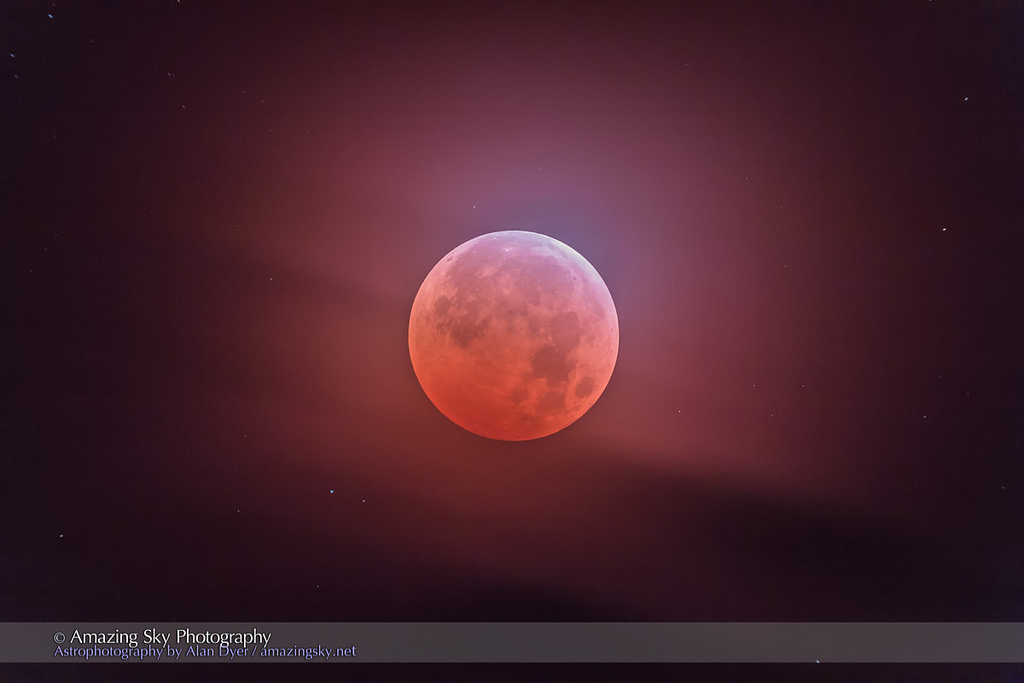By now, you’ve heard the news. One of the top astronomy events for 2019 is coming right up on the night of January 20th into the morning of the 21st with a total eclipse of the Moon. There’s lots of hype circulating around this one, as it assumes the meme of the “SuperBloodWolf Moon eclipse” ’round ye ole web.
But don’t let the hype fool you. Lunar eclipses are amazing to watch unfold, and are much more leisurely events versus the swift passage of a total solar eclipse. And while you certainly can watch a lunar eclipse with binoculars or a telescope, the best way to watch a total lunar eclipse is with the naked eye.
First, the basics leading up to the event. The umbral phases for the eclipse span over three hours in duration, and totality lasts just a second shy of 1 hour and 2 minutes long. North and South America will see the eclipse in its entirety late in the evening, while western Europe and northwestern Africa will see the eclipse in progress at local sunrise and moonset. Hawaii and the western Pacific region will see the eclipse ongoing at Moonrise.
A lunar eclipse occurs when the Moon is near Full and enters the Earth’s shadow. With an orbit inclined 5.1 degrees relative to the ecliptic, the Moon “misses” the Earth’s shadow during most Full Moons… about two to three times a year, however, the intersection of the Moon’s orbit along the ecliptic (its ascending or descending node) falls near the dark inner umbra of the Earth’s shadow ringed by the bright outer penumbral shadow, and a lunar eclipse occurs. A lunar eclipse can either be a subtle penumbral, a partial eclipse just grazing the inner umbra, or, as we’re seeing this month, a total lunar eclipse, with the Moon fully immersed in the Earth’s dark umbra.
Eclipses also occur in pairs, one solar and one lunar. The first eclipse of 2019, the partial solar eclipse on January 6th, lined us up for the January 21st lunar eclipse.
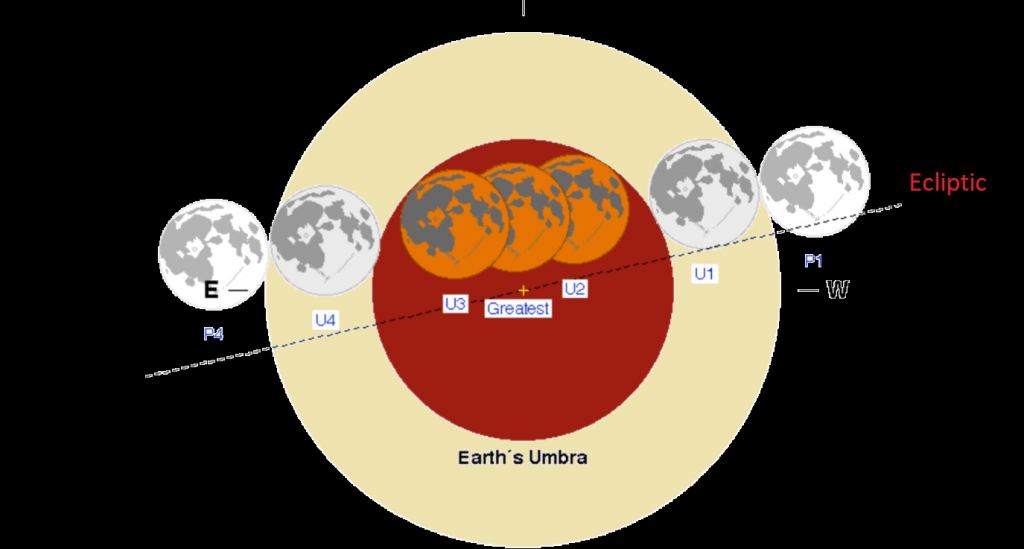
Here are the times for the key events in the eclipse (all times are quoted in Universal Time):
First penumbral contact: 2:37 UT
Partial phases begin: 3:34 UT
Totality starts: 4:41 UT
Totality ends: 5:43 UT
Partial phases end: 6:51 UT
Last penumbral contact: 7:48 UT
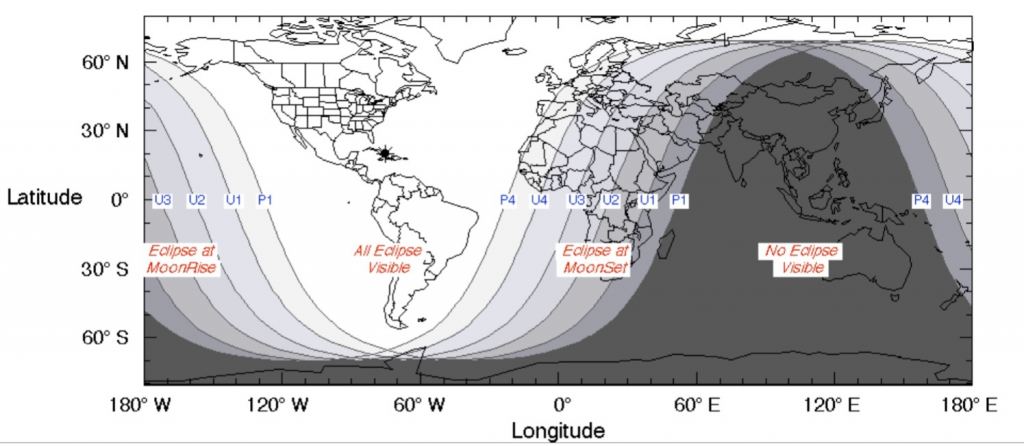
How ‘Super’ is this Eclipse… Really?
As mentioned previous, this eclipse is also getting billed as a “Supermoon Eclipse,” with a few caveats. The Moon reaches perigee or its closest point to the Earth at 357,344 kilometers distant on January 21st at 19:59 UT, about 14 hours after mid-eclipse. But this isn’t the closest Full Moon of 2019 in time or space: the February 19th Full Moon beats it out by over 500 km and eight hours. Also, “Supermoon” isn’t really an astronomical term—it was actually coined by an astrologer, and only gained traction in modern times with a vague qualification—we prefer the term proxigean or perigee Moon, though Supermoon is probably with us… for now.
The Blood of the Wolf
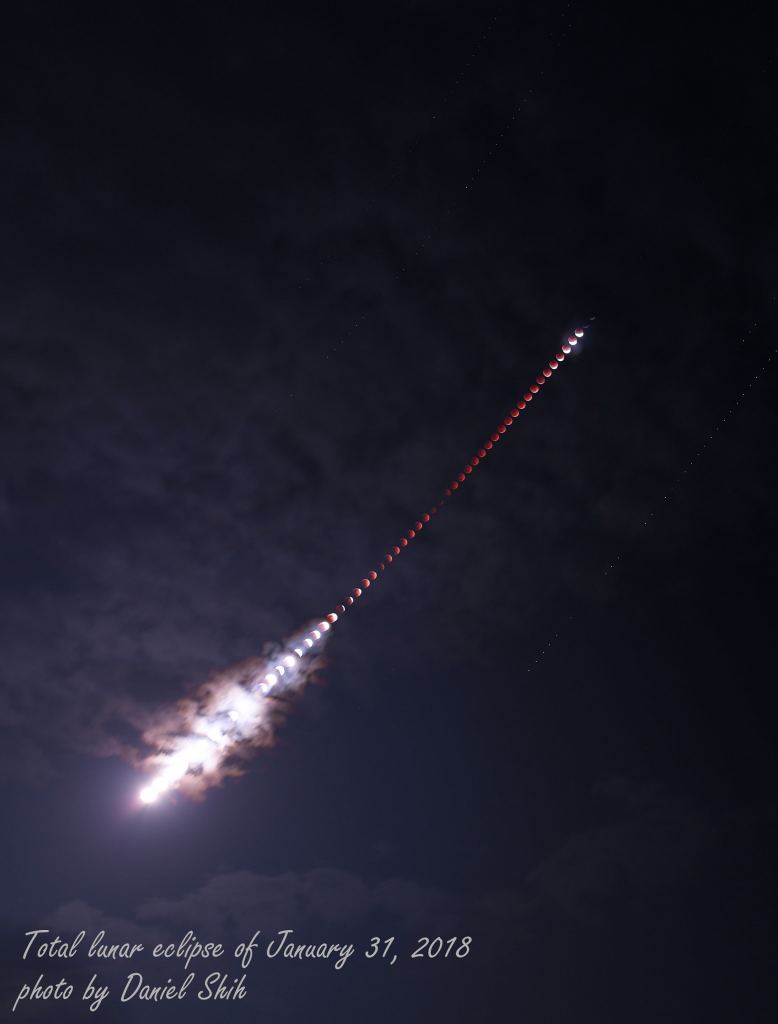
This first Full Moon of the year is also known as the Wolf Moon, as reckoned by the Algonquin Indians, a time for the wolves to howl at the Moon on long winter nights. Will they pause their ululations on the night of January 20/21st, briefly fooled by the eclipse?
Tales of the Saros
Eclipses—lunar and solar—also occur in 18 year, 11 day and 8 hours-long groups, a period known as a saros. This means that, slightly over 18 years after a given eclipse, another one with very nearly the same circumstances occurs offset by only eight hours, with the Earth rotated 120 degrees westward. Several saroses are active during any given year, and they slowly evolve over millennia.
This month’s lunar eclipse is part of saros 134, member 27 of 73 eclipses in the group. Saros 134 began with a brief penumbral graze on April 1st, 1550, produced its first total eclipse on October 25th, 1874, and runs all the way out to May 28th , 2830 AD.
It’s fascinating to contemplate the 54-year span of three saros cycles known as an exeligmos, bringing the eclipse cycle back around to the same longitude. For example, we caught member 25 of this same series as a chilly early morning eclipse on January as a teenager on December 30th, 1982, then caught the next eclipse in the series from Italy while in the military on the morning of January 9th, 2001, before seeing this eclipse setting from the shores of Spain in 2019.
We’ve got one more eclipse in this saros cycle to catch on January 31st, 2037… then the personal exeligmos for saros cycle 134 will be complete.
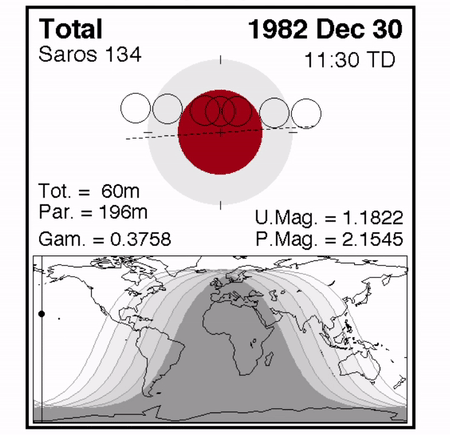

Observing eclipses can punctuate our lives, clockwork events we can count on. But not all eclipses are created the same. In addition to the duration, the chief difference is the color from one total eclipse to the next. Sometimes, the Moon can appear a bright sickly yellow on the rim of the Earth’s shadow, while it may appear a deep brick red or disappear completely during a passage through the core of the Earth’s shadow, which is about three times the diameter of the Moon. The color is caused by the amount of dust, volcanic ash and aerosols suspended in the Earth’s atmosphere at the time, as the light from a thousand sunrises and sunsets is bent into the cone of the Earth’s shadow and cast back onto the Moon. The color and shade of the eclipsed Moon is described as its Danjon Number, with 0 being dark, and 4 being a bright eclipse.
Don’t expect much action at first. The penumbral phases of a lunar eclipse are subtle, and you probably won’t notice a slight tea-colored shading on the Moon’s limb until about 30 minutes after it starts. Things start to get interesting once the Moon first approaches the ragged dark edge of the umbra. Watch for a growing ‘bite’ taken out of the southeastern limb of the Moon.
Then the real action begins, as totality starts. If you’re doing photography, you’ll want to start rapidly dialing down exposure times from a fast 1/100 to 1/500th of a second, to a slow second or more longer exposure. Nearby stars in the constellations of Cancer and Gemini will also start to emerge.
Want to estimate the magnitude of the eclipsed Moon? Here’s a neat, if somewhat bizarre, trick. Take a look at the pinpoint Moon during totality looking at it backwards through a pair of binoculars and comparing it to a nearby bright star, such as Castor or Procyon. The trick is to know the light extinction level for your binoculars beforehand to factor it in. Do this by gauging the apparent reverse view brightness of a star or planet of known brightness.
Finally, don’t forget to share this last total lunar eclipse of the decade with friends. There it is for our observing pleasure at this moment in time and space, the shadow curve of our fair planet, cast upon the limb of our solitary natural satellite.

